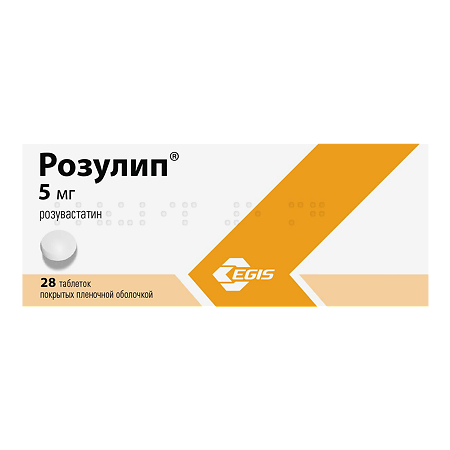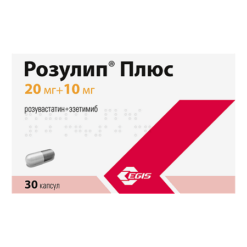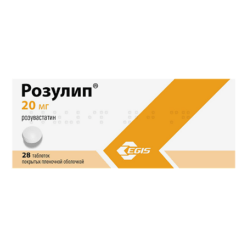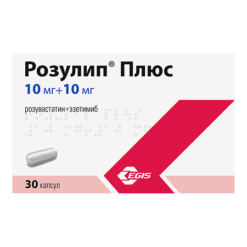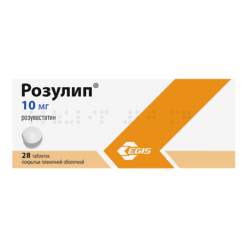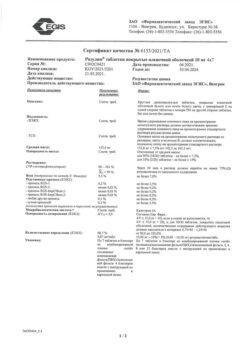No products in the cart.
Rosulip, 5 mg 28 pcs.
€19.31 €16.73
Description

Pharmacotherapeutic group:
hypolipidemic agent – HMG-CoA reductase inhibitor.
ATC code: C10AA07
Pharmacological properties
Mechanism of action
Rosuvastatin is a selective, competitive inhibitor of 3-hydroxy-3-methylglutaryl coenzyme A (HMG-CoA) reductase, the enzyme that converts HMG-CoA to mevalonate, a precursor of cholesterol (CH). The main target of rosuvastatin action is the liver, where it synthesizes cholesterol and catabolizes low-density lipoproteins (LDL).
Rosuvastatin increases the number of “hepatic” LDL receptors on the surface of liver cells, increasing capture and catabolism of LDL, which in turn leads to inhibition of synthesis of very low density lipoproteins (VLDL), thereby reducing the total amount of LDL and LDL.
Pharmacodynamics
. Rosuvastatin reduces elevated concentrations of LDL-C, total cholesterol and triglycerides (TG), increases concentrations of high-density lipoprotein cholesterol (HDL-C), and decreases concentrations of apolipoprotein B (Apo B), low-density lipoprotein cholesterol (Non-LDL), HDL-C, TG-LDL-C, and increases apolipoprotein A-I concentration (Apo A-I) (see Tables 1 and 2). Tables 1 and 2), decreases the ratio of LDL-C/HC-LDL, total CH/LDL and non-LDL-C/HC-LDL and the apo B/Apo A-I ratio.
Therapeutic effect develops within one week after the start of treatment. Within 2 weeks of therapy, efficacy reaches a level that is 90% of the maximum possible. Maximum therapeutic effect is usually reached by the 4th week of therapy and is maintained with regular use of the drug.
Table 1. Dose-dependent effect in patients with primary hypercholesterolemia (type ΙΙa and ΙΙb by Fredrickson classification) (mean adjusted percentage change from baseline).
Dose | Number of patients | LDL-C | Total HC | HDL-C | TG | Non-HDL cholesterol | Apo B | Apo A-Ι | |
Placebo | -7 | -5 | 3 < | -3 | -7 | -3 | 0 | ||
10 mg | 17 | -52 | -36 | 14 | -10 | -48 < | -42 | 4 | |
20 mg | 17 | -55 < | -40 | 8 | -23 | -51 | -46 | 5 | |
40 mg | 18 | -63 | -46 | 10 | -28 | -60 | -54 | 0 |
| Shelf life | 3 years. |
|---|---|
| Conditions of storage | At a temperature not exceeding 30 °C |
| Manufacturer | EGIS, Hungary |
| Medication form | pills |
| Brand | EGIS |
Other forms…
Related products
Buy Rosulip, 5 mg 28 pcs. with delivery to USA, UK, Europe and over 120 other countries.

